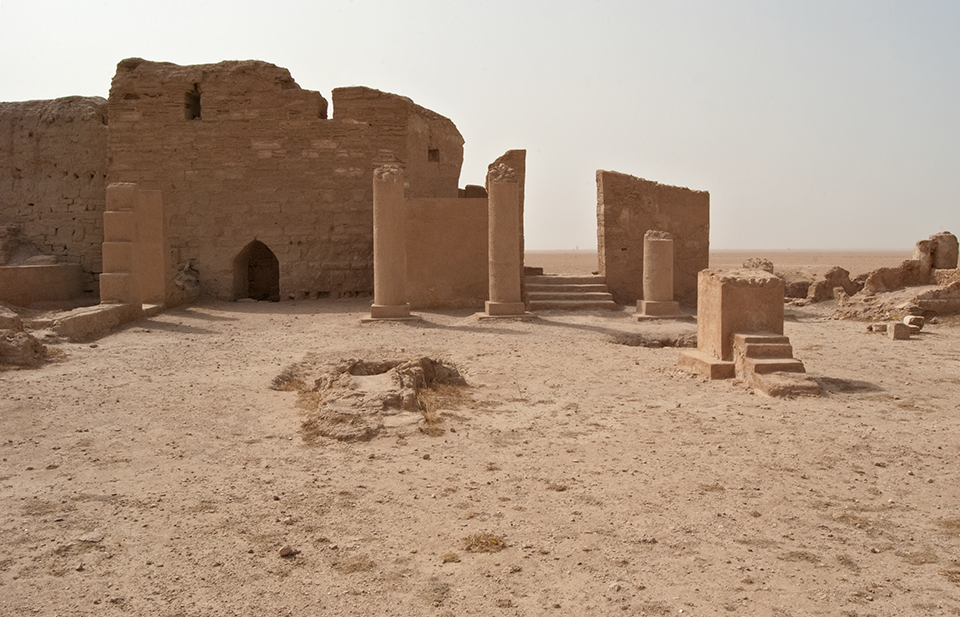Temple of the Palmyrene Gods and Tower T1
23 September 2010 | Andrew Wilson/Manar al-Athar (Resource ID: 92365)

This photograph of the Temple of Bel (also called the Temple of Palmyrene gods), the altars in its courtyard, and Tower 1 was taken six months before the conflict in Syria began in March 2011: subsequently, Dura has been devastated by intensive looting. The buildings were consolidated by the Mission Franco-Syrienne d’Europos-Doura (MFSED), whose site preservation program between 1986 and 2011 restored numerous structures that had been excavated during the Yale-French Excavations decades earlier. The temple is located in Dura’s northwest corner, within a sector that became part of a Roman military camp in approximately 165 after the emperor Lucius Verus’ successful campaign against the Arsacid (Parthian) Empire. The religious traditions of the cohort of soldiers from Palmyra (cohors XX Palmyrenorum) stationed at Dura reveal close links to their home city, as well as their integration within the Roman army. Palmyrene deities and worshippers feature prominently in the paintings, altars, and inscriptions discovered in the temple: one of the most famous paintings is the scene of the tribune Julius Terentius performing a sacrifice, together with members of his unit, in front of statues of three Palmyrene gods, the Tyche (Fortune) of Palmyra, and the Tyche of Dura, now in the collection of the Yale University Art Gallery (1931.386). This painting, and the painting of Conon and his family (see photograph in section 2), dated to a much earlier period, were discovered by chance in 1920 by British soldiers. Their discovery prompted James Henry Breasted of the Oriental Institute of the University of Chicago to come to the site to study and photograph them, and his book subsequently inspired the French-Syrian excavations that began in 1922 under the direction of Franz Cumont, who recognized the importance of the paintings.